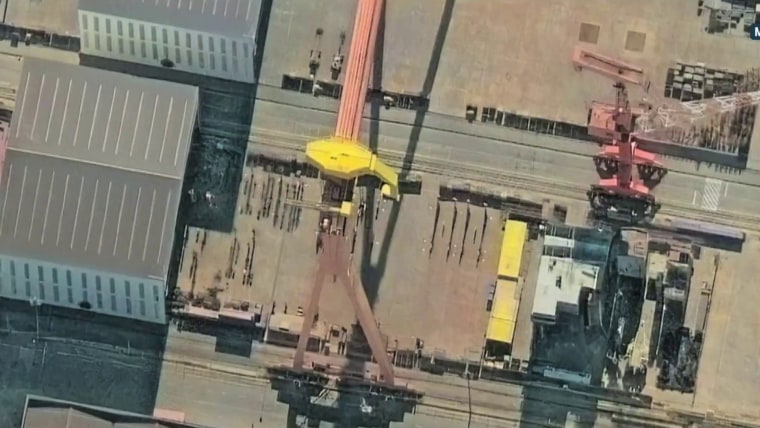HONG KONG — China’s largest and most advanced aircraft carrier has entered service, Chinese state media said Friday, in a major step for the world’s largest navy as it seeks to challenge U.S. dominance in the Pacific.
The Fujian is China’s third aircraft carrier but the first to be both designed and built domestically. It features an electromagnetic catapult system that allows for aircraft launches with heavier payloads compared with existing launch systems, according to CCTV, China’s state-run broadcaster.
Chinese leader Xi Jinping presided over the carrier’s commissioning on Wednesday at a military port on the island of Hainan in a ceremony attended by over 2,000 naval officers and construction personnel, CCTV said.
Both of China’s previous aircraft carriers used a ski-jump type system, which is unable to handle fighter jets carrying heavier loads or large support aircraft. Its first aircraft carrier, the Liaoning, was made by the Soviet Union while its second, the Shandong, was built in China based on the Soviet model.
The Fujian’s three electromagnetic catapult positions “were particularly noticeable” along the flight deck, the CCTV report said, which also featured China’s new carrier-based jets: the stealth-fighter J-35, the heavy-fighter J-15T, and the early-warning aircraft KJ-600.
Though the Chinese navy is the world’s largest, the U.S. navy, with its 11 aircraft carriers, is still considered the most advanced.

Under Xi, China’s navy has undergone rapid modernization with the goal of being able to go head-to-head against America’s. China has said its goal is for military modernization to be “basically complete” by 2035, and for the Chinese military to be “world class” by 2049, the 100th anniversary of communist rule.
Experts say the Fujian and the other two carriers could be crucial assets in the event of conflict over Taiwan, the self-governing island democracy that Beijing claims as its territory.
China’s neighbors are closely watching its military developments.
“It appears that the aim of the Chinese military is to enhance its operational capabilities in distant waters and airspace through the strengthening of their naval forces,” Minoru Kihara, Japan’s top government spokesperson, told reporters in Tokyo on Friday.
He said China was “expanding its military capabilities extensively and rapidly, without sufficient transparency,” adding that Japan was monitoring Chinese military activity in the area and would “respond calmly but also resolutely” if necessary.
The commissioning of the Fujian comes two months after China held a massive military parade in Beijing that showcased its most advanced weapons.
The Fujian, which was launched in 2022 and began sea trials in May 2024, is only the second aircraft carrier in the world to use an electromagnetic catapult system after the latest American carrier, the USS Gerald R. Ford. Most American carriers use older steam catapult technology that China has bypassed.
But the Fujian lags behind in one key area: nuclear power.
All American carriers are nuclear-powered, meaning they have virtually unlimited range, while the Fujian, which is the world’s largest conventionally powered warship, is estimated to have a range of up to 10,000 nautical miles.
That could change, however, as China may be developing a nuclear-powered supercarrier, NBC News reported in March.
All three Chinese aircraft carriers — the Liaoning, the Shandong and the Fujian — are named after coastal provinces.

